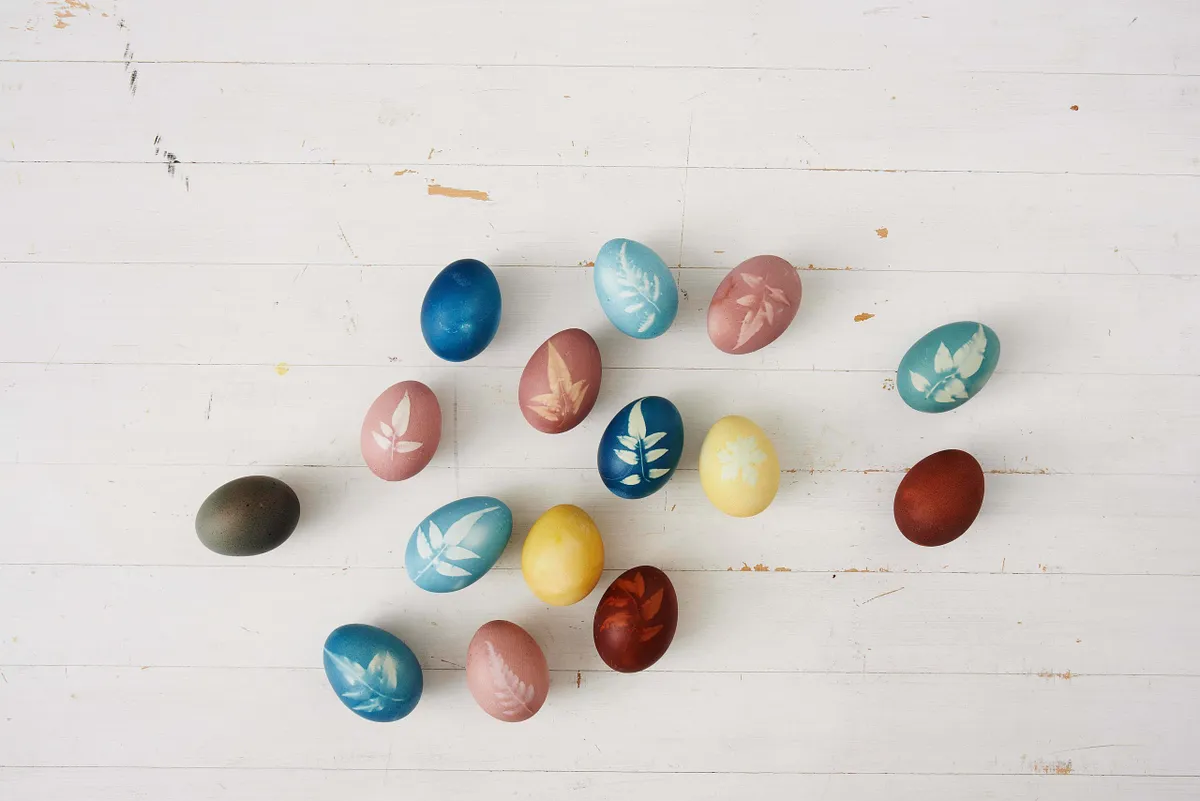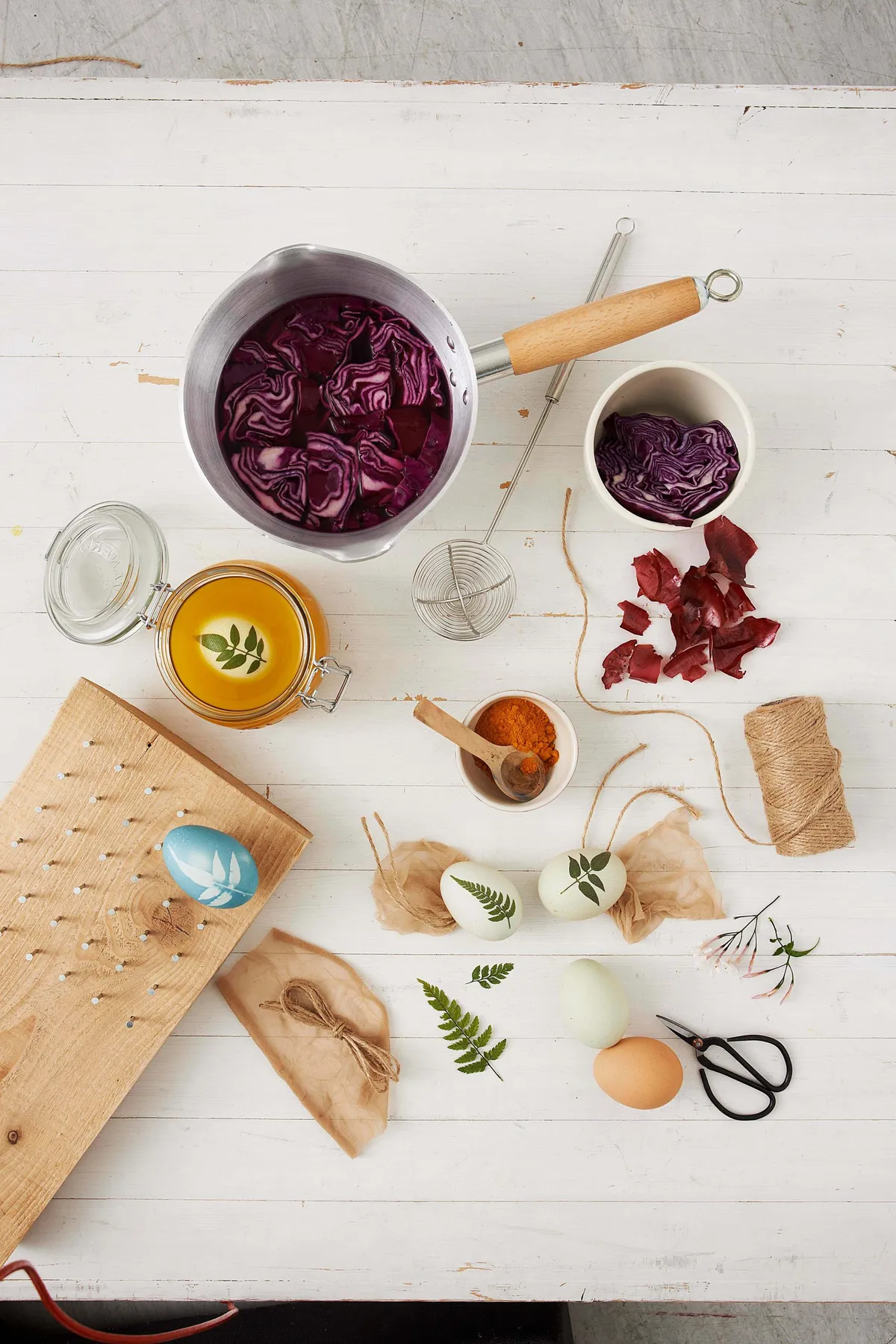There are lots of ways to dye eggs for Easter, springtime or as special treat all year round. The traditional way is to make dyes using natural ingredients such as berries, vegetables, leaves, flowers and spices. This is surely the most beautiful way too, producing a wide range of pastel and earthy tones from dusky pink to powder blue, lavender, ochre and charcoal.
Decorating Easter eggs with botanical prints
TOOLS
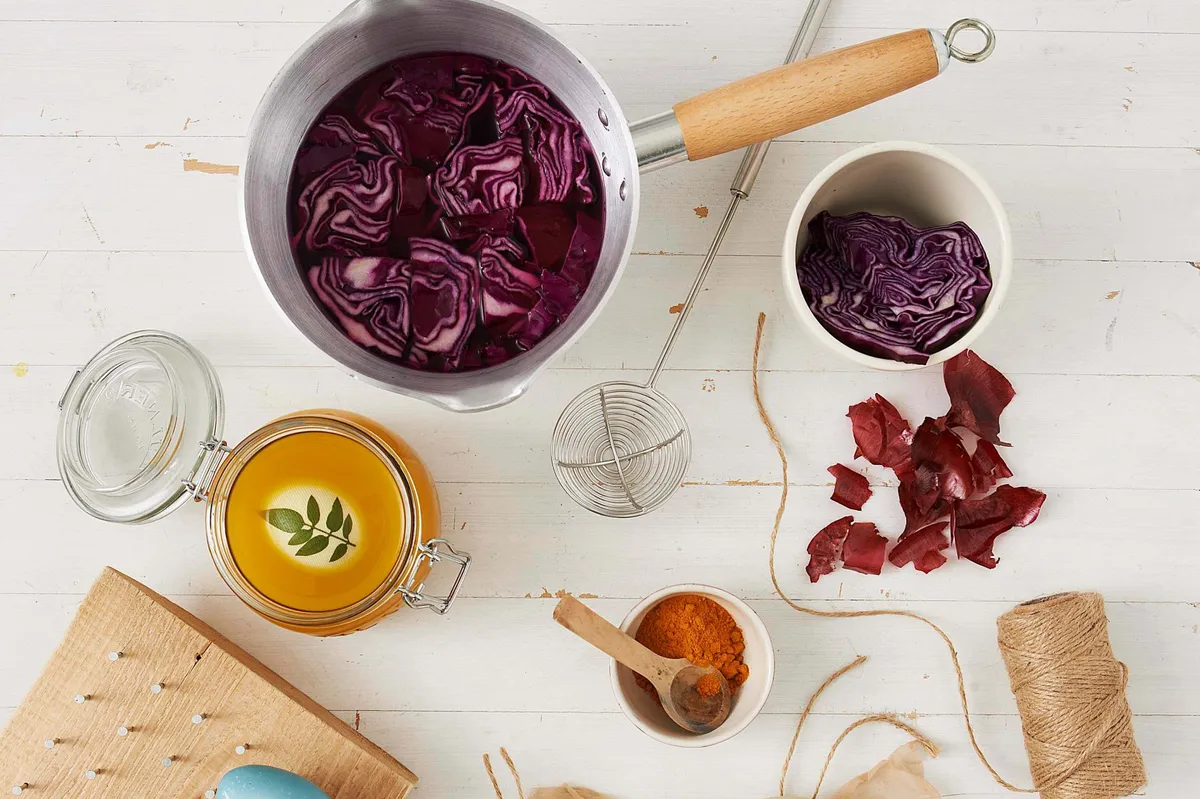
- Use non-reactive metal or glass tools when working with dyes.
- Pan or stockpot (one per dye)
- Bowl (one per dye)
- Strainer
- Measuring cup
- Wooden spoon
- Wire ladle or slotted spoon
- Small scissors
- Drying rack
- Paper towels
- Preserving jars (for storage of dye)
MATERIALS
- Selection of pressed leaves and flowers
- Eggs (white, brown or duck egg blue)
- Muslin or stockings cut into 6 inch / 15 cm squares String
- Distilled malt vinegar (2 tablespoons per dye) Boiled water (4 cups per dye)
- 4 cups red onion skins
- 4 cups chopped red cabbage
- 3 tablespoons turmeric powder
- 4 cups chopped beet
- 4 cups grape juice (no water required)
- Oil for sheen (vegetable, olive or coconut)
INSTRUCTIONS
- Check eggs for cracks or fractures and clean with a paper towel and vinegar. Wash the egg carefully to help remove any acidic or oily residues. If you want to eat the eggs you need to boil them for 15 minutes and then cool in the fridge. They will stay edible if you use natural dye, for up to a week if kept refrigerated. If you prefer, keep the eggs raw and blow them after dyeing to keep as decorations. You can use the raw egg in cakes or scrambled eggs.
- Choose a selection of pressed flowers and leaves. Small soft flowers that can be easily rolled around the egg and leaves with crisp outlines such as jasmine, ferns and parsley work best.
- Working one egg at a time, dip a pressed flower or leaf in a tiny bit of water and place onto eggshell in the desired location. Gently place a square of fabric over the leaf ensuring it doesn’t curl up in the process. Bundle the corners together and secure with a slip knot
- Choose the colour of your final eggs using the chart below as a guide. Dyeing brown or white eggs, leaving them in dye for longer, or double-dipping eggs will also produce different tones or hues.
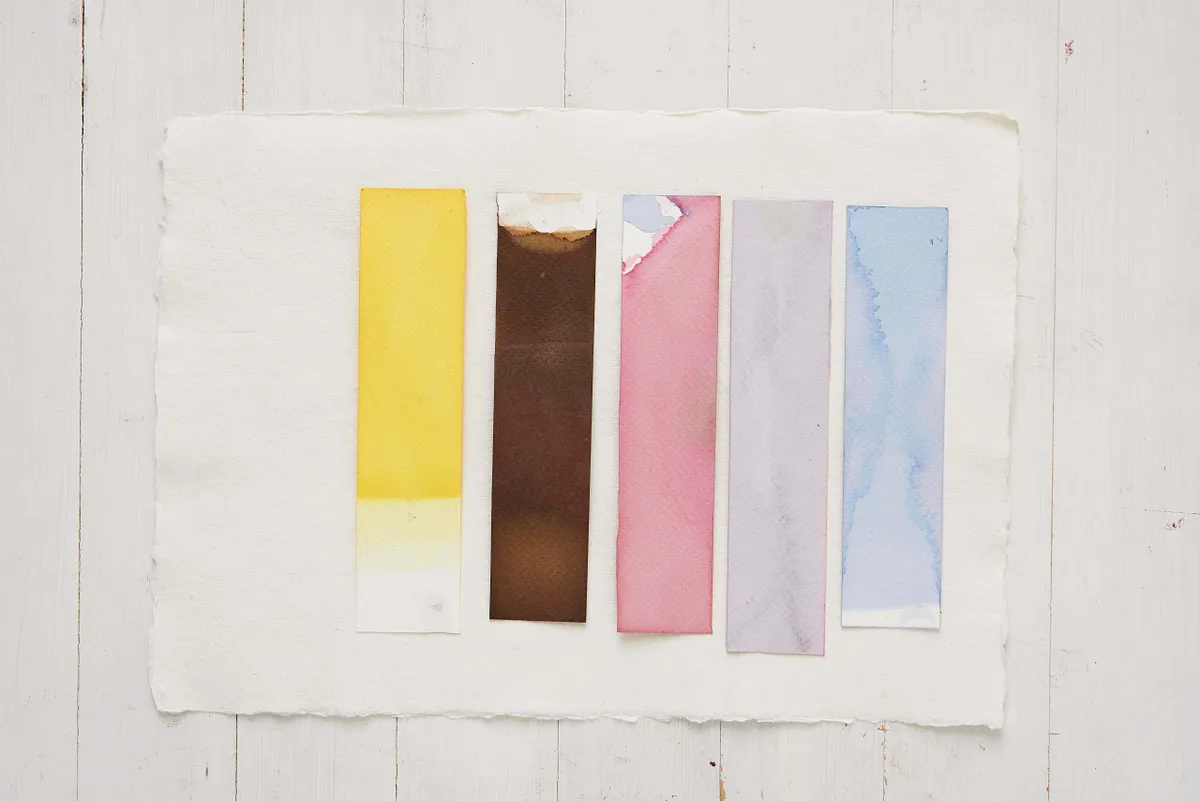
Turmeric, red onion skin, beetroot, grape juice, red cabbage - Create a base each dye by mixing 4 cups of boiled water with 2 tablespoons of vinegar (cabbage, red onion skin and beets give a deeper colour when boiled). Add one dye ingredient, bring to the boil and simmer for 30 minutes. For turmeric you can just add powder straight to a bowl of boiled water. Grape juice can be used fresh.
- Strain the dye into a bowl and leave to cool.
- Place the wrapped egg into your chosen dye and leave for between 30 minutes to overnight, depending on the depth of colour required. If using boiled eggs to eat, soak them in the fridge.
- Remove the eggs and cut off the fabric pouch. Try not to touch the egg to avoid smearing. Leave the eggs on a baking rack to dry (or make a board by hammering evenly spaced pins or nails into soft wood). Once completely dry, for added shine, rub the eggs with oil using a paper towel.
Other natural dye ingredients
Brown onion skins, black coffee (instead of water), spinach, paprika, pickled beet juice (minus the vinegar), blueberries, tea, and flower petals such as cornflower, violet, pansy, geranium or marigold.
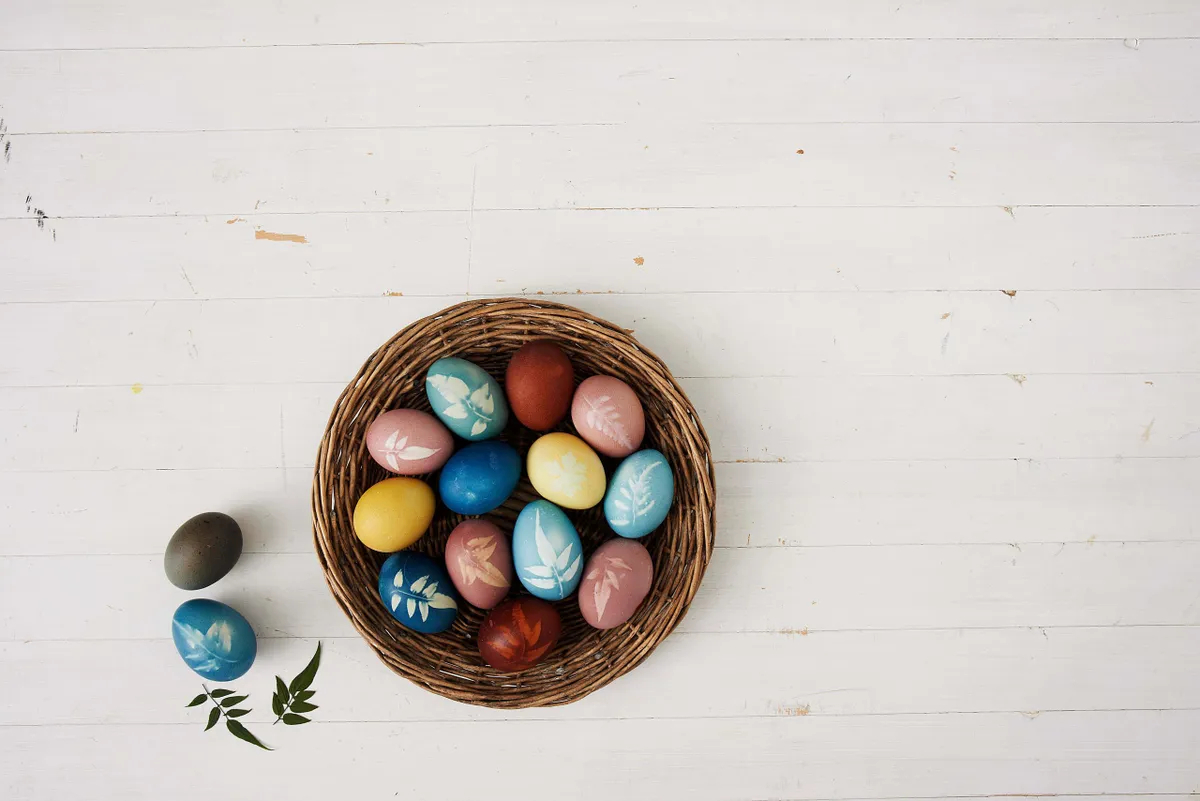
Writer, editor and artist Sonya Patel Ellis is author of Collin's Botanical Bible/The Botanical Bible (William Collins/Abrams, 2018) and The Heritage Herbal (British Library Publications, March 2020). See www.abotancialworld.com
